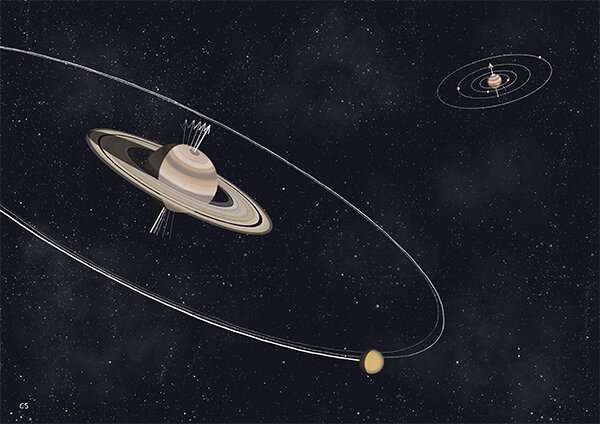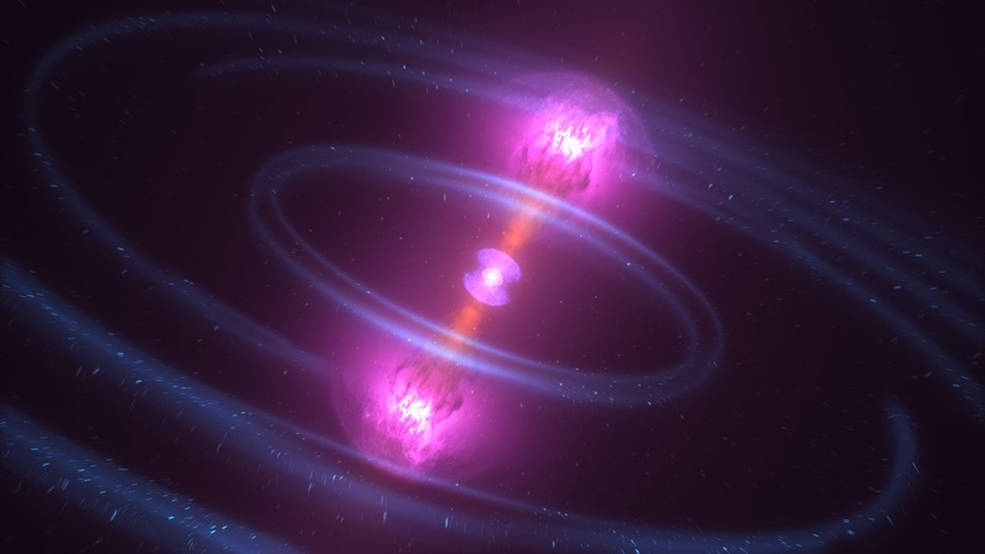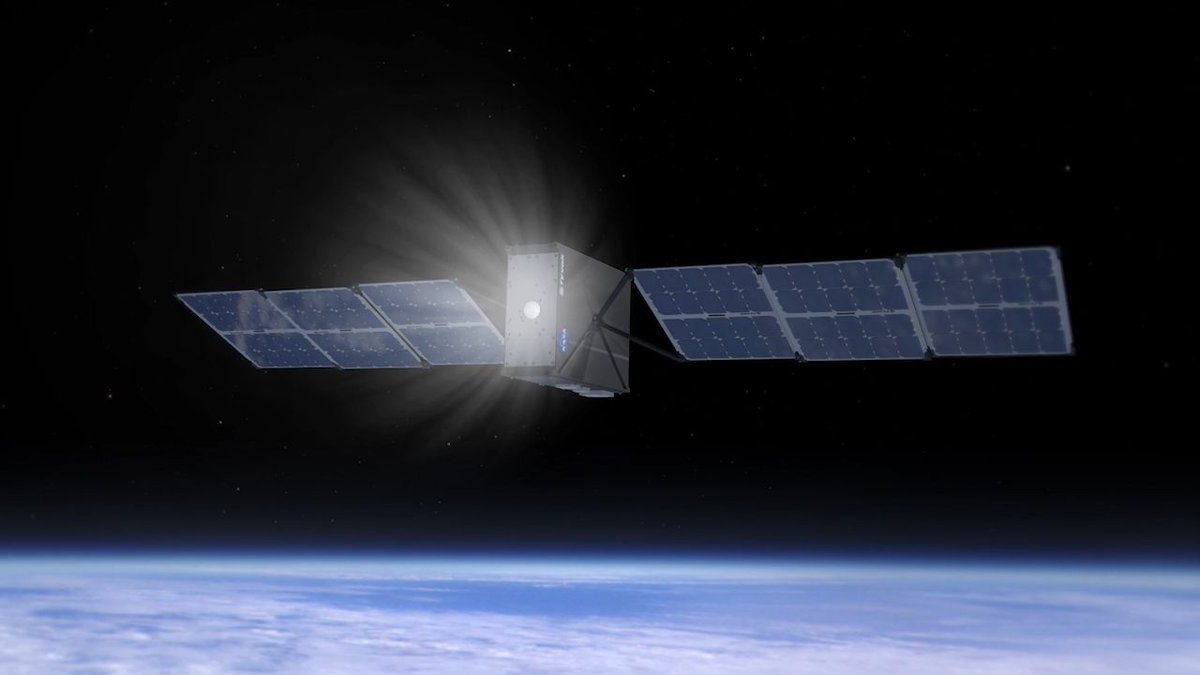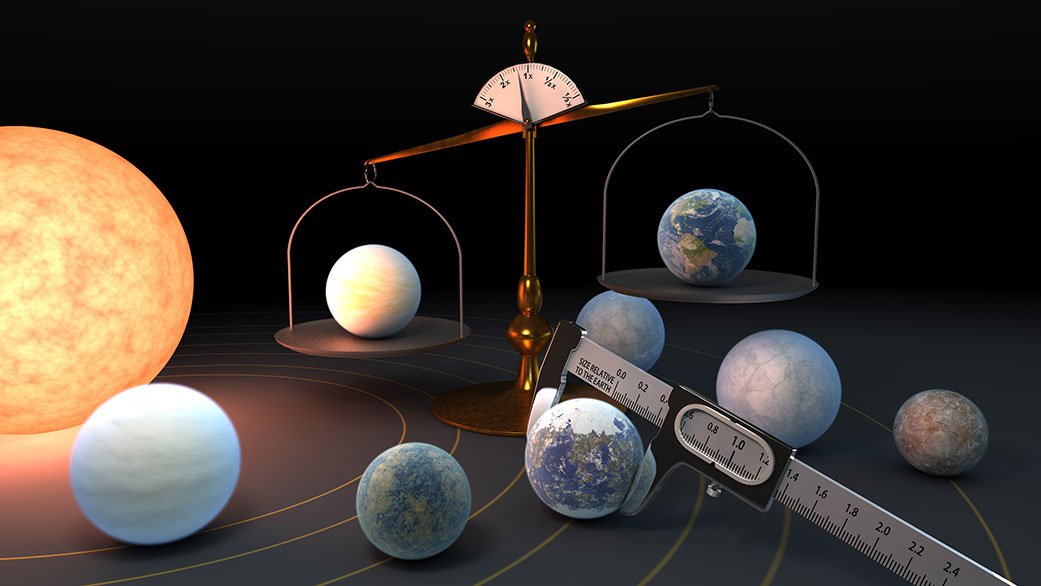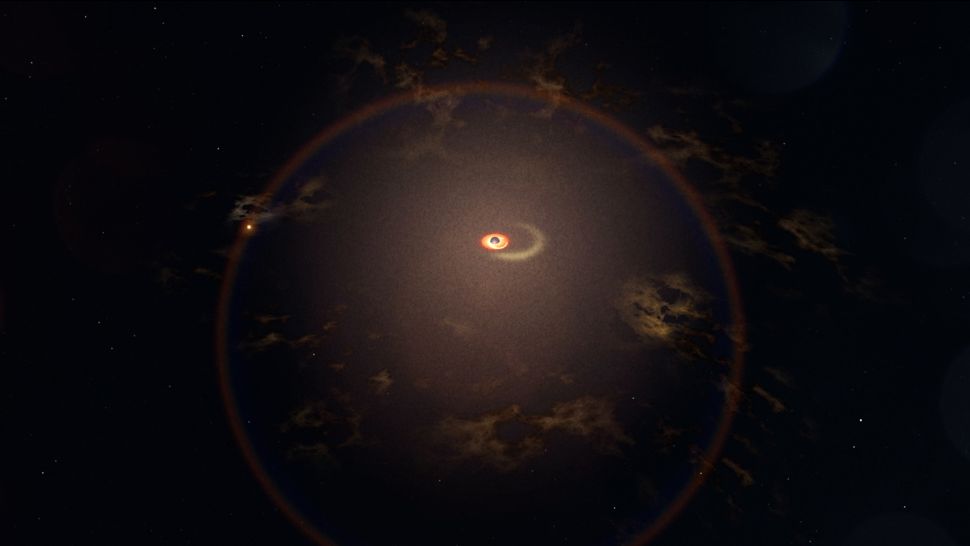Zooniverse brings out the best of the internet – it leverages the skills of average people to perform scientific feats that would be impossible otherwise. One of the tasks that a Zooniverse project called Backyard Worlds: Planet 9 has been working on has now resulted in a paper cataloguing 525 brown dwarfs, including 38 never before documented ones.
Continue reading “We Now Have a 3D Map of The 525 Closest Brown Dwarfs”Saturn Got Its Tilt From Its Moons
One of the fundamental tenets of physics is that two objects, now matter how different their size, exert a force on each other. In most cases the size makes a big difference, with the larger objects enacting a much greater force on the smaller one.
However, over long periods of time, even much smaller objects can have an effect on the larger object in the pair. Recently a team of researchers from CNRS, the Sorbonne, and the University of Pisa have found an example of the smaller object, or in this case group of objects, having an outsized impact on the larger one. They have discovered that Saturn’s moons actually caused its famous tilt.
Continue reading “Saturn Got Its Tilt From Its Moons”All The Gravitational Waves Detected So Far
Few events in the astronomy community were received with more fanfare than the first detection of gravitational waves, which took place on September 14th, 2015. Since then, different events have been recorded using the same techniques. Many include data from other observational platforms, as the events that normally create gravitational waves are of interest to almost everyone in the astronomical community. Black hole and neutron star mergers and the like provide a plethora of data to understand the physics that happen under such extreme conditions.
To distribute that data equitably, researchers at LIGO, one of the main observatories for gravitational waves, have released a data set that contains information about all 50 confirmed gravitational wave events that have taken place since observations began. What’s more, a team from the Cardiff University made a tool that makes it much easier to navigate the data.
Continue reading “All The Gravitational Waves Detected So Far”What Did The Solar System Look Like Before All The Planets Migrated?
Early planetary migration in the solar system has been long established, and there are myriad theories that have been put forward to explain where the planets were coming from. Theories such as the Grand Tack Hypothesis an the Nice Model show how important that migration is to the current state of our solar system. Now, a team from Lawrence Livermore National Laboratory (LLNL) has come up with a novel way of trying to understand planetary migration patterns: by looking at meteorite compositions.
Continue reading “What Did The Solar System Look Like Before All The Planets Migrated?”NASA has Chosen 4 new Pioneer Missions: Aspera, Pandora, StarBurst, and PEUO
Budget constraints are a major consideration for every space program throughout the world. Lately, NASA has taken a particularly bold approach, by not only innovating through novel ideas that could do great science, but innovating with the way they fund those missions. A good example of this innovation is the Astrophysics Pioneers program, which is a NASA fund program targeted at early- to mid-career researchers. The interesting thing about the program is that the overall budget for each project is capped at $20 million. Now, the program has selected its first four projects to move ahead to its second stage.
Continue reading “NASA has Chosen 4 new Pioneer Missions: Aspera, Pandora, StarBurst, and PEUO”A Cubesat Will Test out Water as a Propulsion System
Novel propulsion systems for CubeSats have been on an innovative tear of late. UT has reported on propulsion systems that use everything from solid iodine to the Earth’s own magnetic field as a way of moving a small spacecraft. Now there is a potential solution using a much more mundane material for a propellant – water.
Continue reading “A Cubesat Will Test out Water as a Propulsion System”There are Seven Rocky Planets in the TRAPPIST-1 System and They’re Surprisingly Similar
The TRAPPIST-1 system has long be studied by exoplanet hunters due to its unique quantity of planets that happen to also be Earth sized. In a recent paper, a team of scientists led by Eric Agol at the University of Washington, dove into more detail on the density of the seven known planets in the system, and, surprisingly, found that they were all very similar.
Continue reading “There are Seven Rocky Planets in the TRAPPIST-1 System and They’re Surprisingly Similar”Lightweight Iodine Thruster Could Help Solve Space Junk Problem
Rocket fuel is one of the most important components of any maneuverable spacecraft. That is also true for ion thrusters – while they don’t use traditional chemical fuel, they do still need a feed source for their ion engines. Now, a team from ThrustMe, a spinoff of the École Polytechnique and CNRS, has designed a type of ion thruster using a completely novel propellant – iodine.
Continue reading “Lightweight Iodine Thruster Could Help Solve Space Junk Problem”An Active Galaxy That Erupts Predictably Every 114 Days Or So
Computers are known for their ability to spot patterns. It’s what they are good at, and over the last 50+ years they have continued to improve. But they only know how to spot patterns if they know where to look for them in data. So sometimes, it falls to a human to truly see a pattern that no one expected to be there.
That is exactly what happened in the case of the discovery of the most consistent active galaxy yet discovered. Anna Payne, a graduate student at the University of Hawai’i at Manoa, was looking into data collected by the All Sky Automated Survey for Supernovae (ASAS-SN), and notice a strange feature about one of its galaxies, known as ESO 253-3: it was getting significantly brighter every 114 days.
Continue reading “An Active Galaxy That Erupts Predictably Every 114 Days Or So”3-D Printing on the Moon. From Regolith to Paste to Useful Objects and Structures
In the academic literature, review papers are widespread, and can help ground discussion on a specific topic by bringing new researchers up to speed as well as allowing experienced hands to catch up on some topics they might have otherwise missed. Anytime a new one on a topic of space exploration is published, it helps move understanding of the entire discipline forward, even if it might not directly contribute to furthering research itself. With that in mind, it can also be interesting for laymen to read them as well, as they are an excellent way to be quickly brought up to speed on a certain topic.
So if you happen to be interested in lunar exploration, or additive manufacturing more generally, you might be interested in a new review paper from a team at the Skolkovo Institute of Science and Technology. It reviews the current state of the art in additive manufacturing (AM) technology and how it might be applied to building useful tools and structures on the lunar surface.
Continue reading “3-D Printing on the Moon. From Regolith to Paste to Useful Objects and Structures”

